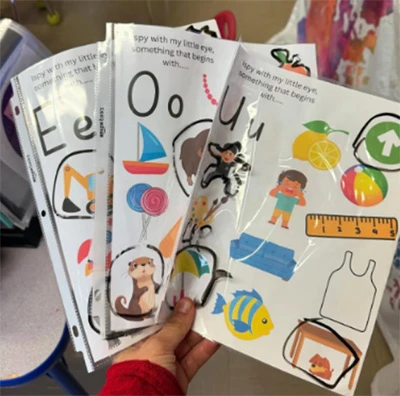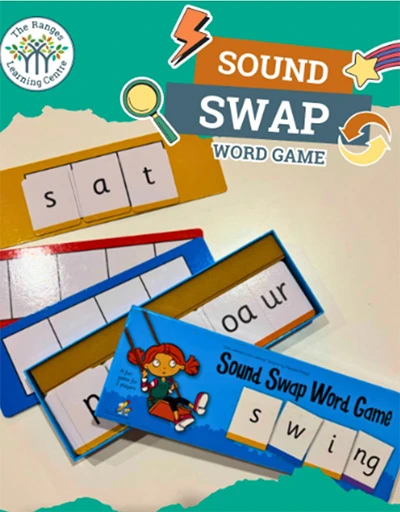6/10/2025
10 Effective Science of Reading Strategies To Use in the Classroom
As educators, you’ve all experienced it. Some students take to reading quickly; others slog through, sounding out every letter, struggling to blend sounds or make sense of text.
As national reading scores dip and classrooms fill with more diverse learners than ever, literacy tops the minds of all educators. How do you help all students master reading?
In this article, learn how to apply science of reading strategies and transform student literacy in your classroom, including 10 classroom strategies to effectively teach the five essential components of reading.
Why Is the Science of Reading Important?
It proves 95% of all students—from all abilities and backgrounds—can learn to read when taught with evidence-based instruction in the five essential components of reading:
Phonemic awareness: Recognizing the sounds (phonemes) in a word to transition into phonics
Phonics: Connecting symbols to sounds (letters to sounds)
Vocabulary: Building a library of words and their meaning
Fluency: Reading and understanding with ease
Comprehension: Gaining the ability to read to learn
Every component must be explicitly taught in sequence to be successful because each skill builds upon the other.
Science of Reading Decoding Strategies Explained
Did you know students process every letter they read? It’s why the five essential science of reading components begin with phoneme awareness and phonics. Students learn a word through decoding—connecting the sound, the letter pattern, and the meaning. The more familiar a word becomes, the more automatic decoding becomes, and that frees up brain space to find word meanings.
But the science of reading demonstrates that decoding is half of the equation. The Simple View of Reading makes it clear that word recognition (decoding) must be equally mastered with language understanding to achieve reading comprehension. One can’t happen without the other.
Science of Reading Strategies You Can Implement in Your Classroom
Try these 10 techniques to teach all five elements of reading, strengthening your students’ decoding skills, and boosting comprehension.
Phonemic Awareness
What to know: Help students identify letter sounds. Encourage them to listen and hear the sounds in words, which helps build decoding skills.
1. I Spy Sounds
Teachers: Make I Spy all about letter sounds. Teacher says: “I spy something that begins with /s/.” Students guess: “Sock!” You can also create phoneme sheets with letter sounds and pictures. Students circle the pictures of items that begin with the letter sound, e.g., Umbrella for /u/.
 (source: teacher Gail Dabbah)
(source: teacher Gail Dabbah)
2. Rhyme Time Remix
Teachers: This is a great way you can help students with ending sound patterns and onset-rime awareness. Teacher says: “I’m thinking of a word that rhymes with cat and starts with /h/.” Students guess: “Hat!”
Phonics
What to know: Now that students know all of the letter sounds, it’s time to put the sounds to letters.
3. Sound swapping
Teachers: Make linking letters and sounds fun with this game. Give students several letter/sound cards. Then, ask them to make a new word by swapping a letter, e.g., sit, pit, pat.
 (source: The Reading League)
(source: The Reading League)
4. Blending words
Teachers: Blending is about putting sounds together to make a word. Try this. Teacher says: “I’m going to talk like a snake ... Can you guess my word?” Then say: “/ssss/ /uuu/ /nnn/” Students shout: “Sun!”
Tip: Ask students to spell out the answer using manipulatives like building blocks or to snap out the answer for kinesthetic learners.
5. Segmenting Words
Teachers: You can easily flip blending exercises so students segment words into individual sounds. It is a great way to prepare for spelling, writing, and building phonics confidence. Teacher says: “log.” Students stretch the word: “/l/ /o/ /g/” Then, they write down each sound they hear.
Tip: It combines segmenting AND spelling—win-win!
Fluency
What to know: When you build fluency, it helps students bridge decoding skills with reading accuracy. It’s one of the most important steps and a key piece of becoming a proficient reader.
6. Paired Readings
Teachers: Giving students a reading partner builds their confidence. Pair two students to read together—one slightly stronger reader with a peer. You can have them read together or take turns. Students: Read the passage in unison or take turns reading by sentence, paragraph, or page.
7. Multiple Readings
Teachers: Choose short poems, jokes, or dialogue-rich texts. Make sure to model the text first by reading aloud the passage. It teaches students the correct expressions. Students: Practice reading aloud multiple times, aiming to improve speed, accuracy, or expression. Then, they can “perform” for a partner, small group, or even stuffed animals.
Tip: The more students practice, the brain starts to recognize words more quickly, builds automaticity, and frees up attention for comprehension.
Vocabulary
What to know: Help learners connect with words—what they mean, how they feel, how we use them, and when they matter.
8. Semantic Mapping
Teachers: You can make this a class or small-group activity. Use a smart board, poster paper, or chalkboard. Start with a target word in the center, e.g., enormous.
Around it, map:
Synonyms: huge, gigantic, massive
Antonyms: tiny, small
Visual examples: an elephant, a skyscraper, a mountain
Draw a picture or find an image.
Use in a sentence: “The enormous cake couldn’t fit in the fridge!”
Tip: Ask and let students suggest the connections so they own the learning and stay engaged.
Strengthening comprehension skills
What to know: Bring reading to life for students. Science of reading comprehension strategies help them learn thinking while reading, making connections, asking and answering questions, predicting, visualizing, and summarizing.
9. Somebody–Wanted–But–So–Then
Teachers: This is a great framework for students to begin identifying key pieces of a story. Use it as a scaffold to help students summarize text they’ve read. Have students read the text, then answer the following either aloud as part of a group or in written form.
Somebody (Who?)
Wanted (What did they want?)
But (What was the problem?)
So (What did they do?)
Then (How did it end?)
Tip: For visual learners, ask students to draw their answers using key scenes from the story.
10. Before–During–After
Teachers: Help students build those critical thinking skills. Use this questioning technique to help students think more deeply about texts.
Before reading: Ask, “What do you think this will be about?”
During: “What’s happening now? Why do you think that?”
After: “What was the big idea? How did that character change?”
Tip: For a smart modification for older students and to promote higher-order thinking, ask why the author chose the setting or ending, or how the story would change if it were told by another character or perspective.
Advantages of Implementing Science of Reading Strategies
It doesn’t matter if you are a pro or novice. Implementing the science of reading can be a game changer.
“Now, I can explain the ‘why’ behind our reading strategies,” said Kristine Brandner, a Lexia® LETRS® Science of Reading Grant recipient. Brandner said implementing science of reading decoding strategies, like phonemic awareness and sound walls, has dramatically affected how she teaches reading.
“I feel a lot more confident that the interventions I am providing my students are backed by science,” said Stephanie Hughes, a dedicated reading intervention specialist and grant recipient.
Lexia's Role in Science of Reading Implementation
One year into her LETRS training, grant recipient Stephanie Hughes saw 80% of her students were making adequate or above-adequate gains toward their literacy goals. “Now, I know how to analyze assessments and be strategic in the interventions I provide. My students have greatly benefited from what I’ve learned,” she said.
Lexia® offers a full suite of solutions to deepen your knowledge in the science of reading, including LETRS professional learning, which prepares pre-K–5 educators and administrators with concrete skills that translate into practical, daily classroom change. Lexia Aspire® Professional Learning also provides a flexible, self-paced, digital option.
If you want to deepen your expertise and possibly experience the same kinds of breakthroughs teaching reading, explore what Lexia can do for you.

